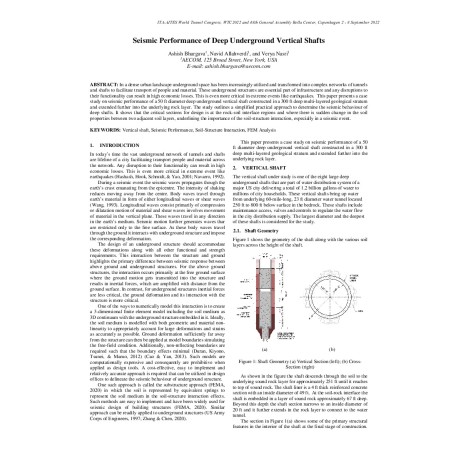Cart
0
0
No document
0,00 €
Total
Document successfully added to your shopping cart
Quantity
Total
There are 0 items in your cart.
There is 1 item in your cart.
Total documents
Total shipping
To be determined
Total
Search & filter
Search for a publication
Search & filter
Viewed documents

Seismic Performance of Deep Underground Vertical Shafts
Seismic_Performance_of_Deep_Unde
V. Nasri / N. Allahverdi / A. Bhargava
In a dense urban landscape underground space has been increasingly utilized and transformed into complex networks of tunnels and shafts to facilitate transport of people and material. These underground structures are essential part of infrastructure and any disruptions to their functionality can result in high economic losses. This is even more critical in extreme events like earthquakes. This paper presents a case study on seismic performance of a 50 ft diameter deep underground vertical shaft constructed in a 300 ft deep multi-layered geological stratum and extended further into the underlying rock layer. The study outlines a simplified practical approach to determine the seismic behaviour of deep shafts. It shows that the critical sections for design is at the rock-soil interface regions and where there is sudden change in the soil properties between two adjacent soil layers, underlining the importance of the soil-structure interaction, especially in a seismic event.


